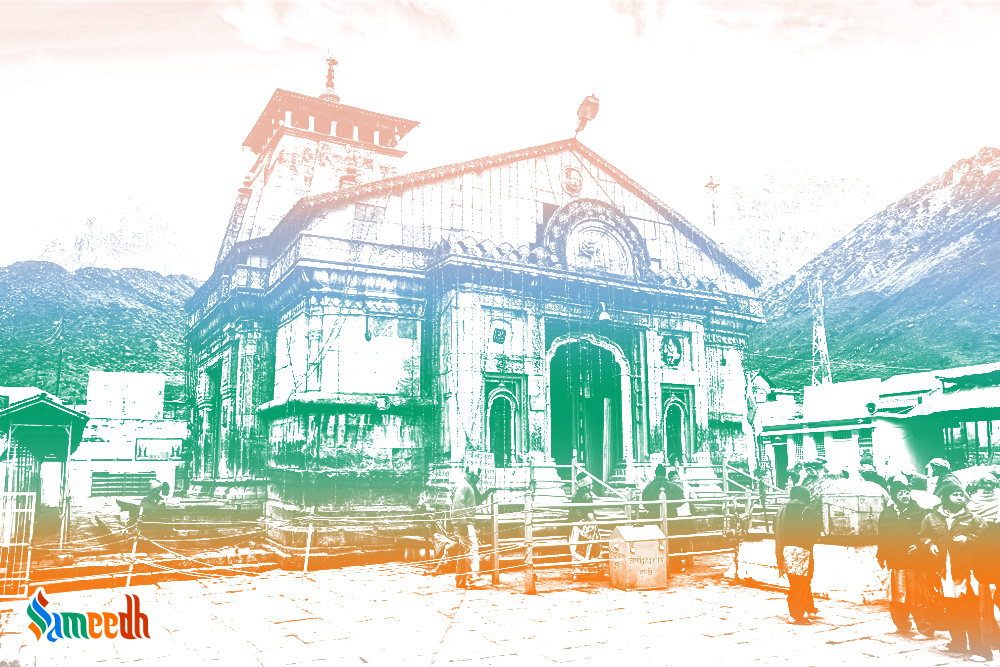The significance and relevance of the holy temple built for lord Shiva in Uttarakhand

LOCATION
One of the most famous Jyotirling is located in the Indian state of Uttarakhand. It is in fact situated 3,500 metres above the sea level and holds the record for the highest placed Jyotirling. Like other Shiv temples, this too is near a river called Saraswati along with Mandakini in the Garhwal Himalayas. Jyotirlings are sacred places of worship particularly for the Hindu god of destruction, Shiv, although other deities too have their idols there. Kedarnath is the first of the five subsequent temples or Panch Kedars.
MYTHOLOGY
The Kedarnath Jyotirling has a mythological significance dating to the great Indian epic of Mahabharat. After the war was fought, the victor Pandavas wanted to perform various rituals seeking penance for the sin of killing members of their own bloodline. They went looking for lord Shiv to offer their apologies in the form of sacrifices and prayers. They searched for him eagerly but it was only after roaming around in vain for a long time, they found the divine god at the spot where Kedarnath stands tall today. Shiv did not forgive them and transformed into a bull, hiding into the depths of the Earth. The strongest Pandu son, Bhim, tried tugging at the bull’s tail in order to pull him out. The attempt was not fully unsuccessful as the bull emerged in various bits, the hump, a symbolic distinction of a bull, appeared in Kedarnath; arms and navel in Tungnath and Madhyamaheshwar; head and hair in Kalpeshwar and the face in Rudranath. These were essentially the Panch kedars.
There are other 11 sacred Jyotirlingas, shrines of Shiva spread across the Indian subcontinent, each built as a powerhouse for defeating evil and negative forces.
Multiple tales surround the establishment of the Jyotirlings. The most famous one being around its existence is such that both Brahma, creator of life and Vishnu, the almighty sustaining life, quarrelled as to who is the greater and the stronger. Shiv pierced all three worlds; heaven, Earth and hell through a beam of light which extended both ways endlessly. Shiva asked them to search for the edges of this beam of light. They both gave it a try but in vain, such was the superiority and grandness of Shiva’s powers. The Jyotirlings denote the greatness and numerous strengths of Shiv.
SIGNIFICANCE
Kedarnath is one of the most popular sites for pilgrimage. There is a certain route and map for Hindu pilgrimage in India which covers four destinations and is known as the char dham yatra or journey through those four. Kedarnath forms one of the four prime spots.
As it lies on a high altitude, it often has to be closed down during the winter months for devotees as the travel can be dangerous. The temple has survived the harsh climatic conditions every year.
ARCHITECTURE AND INTERIOR
One of the Hindu religious texts, Skand Purana first mentions the existence of Kedarnath Jyotirling. Originally, the sacred structure is believed to be built by the winners of the Mahabharat battle, the Pandavas themselves. The present day temple is said to be retouched by Adi Shankaracharya, a famous scholar. There are engraved texts in Pali on the steps of the temple.
The religious building itself is in an irregular shape of a lingam, the statue symbolising Shiv. On the entrance, a huge statue of a bull is erected, in compliance with the legend of Kedarnath.
The other Jyotirlings too have their own unique tale of emergence, be it the one at Kashi or Omkareshwar or Bhimashankar. Each one of these structures carry a particular essence, style of architecture and contribute fairly to Hinduism.